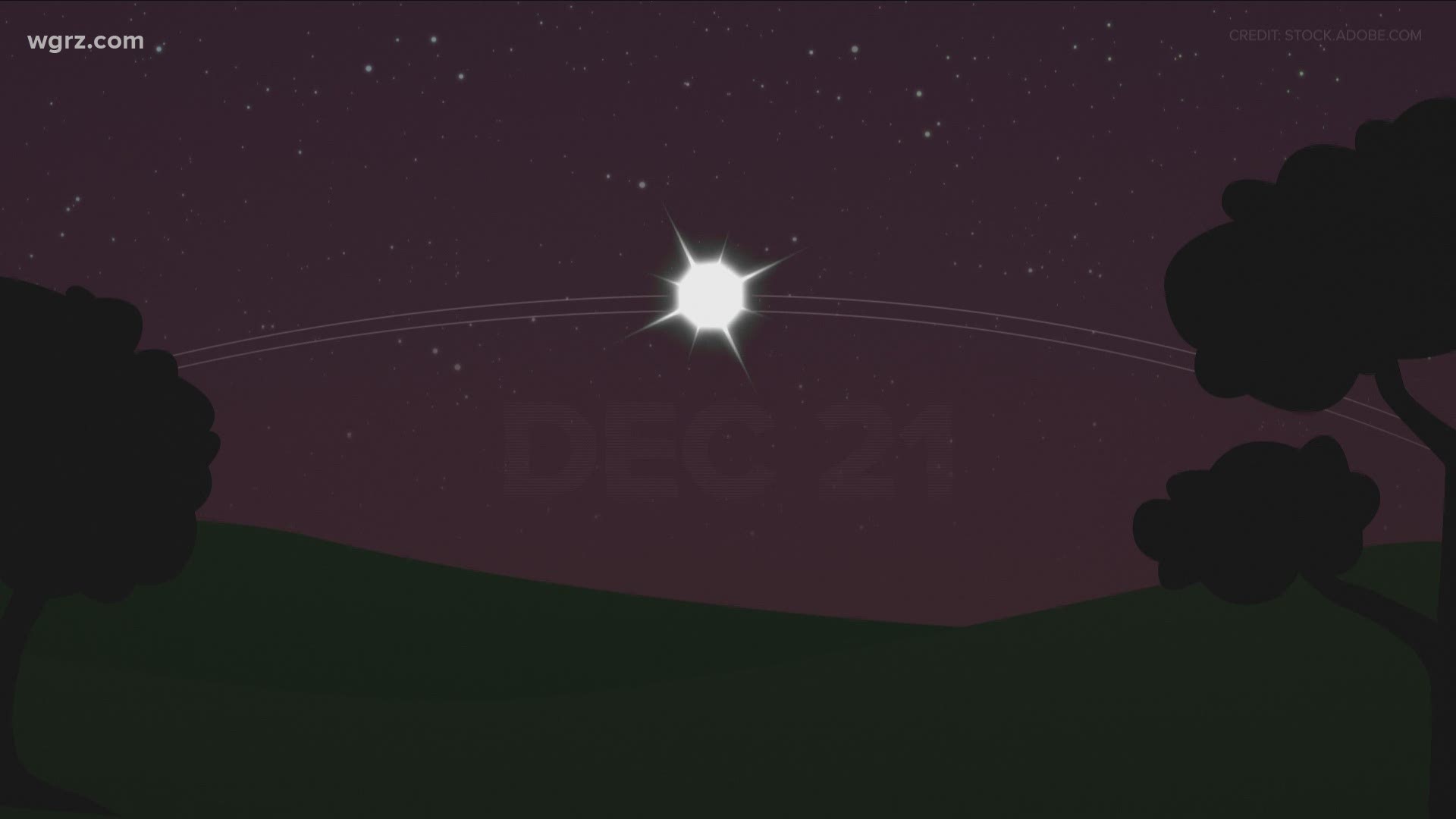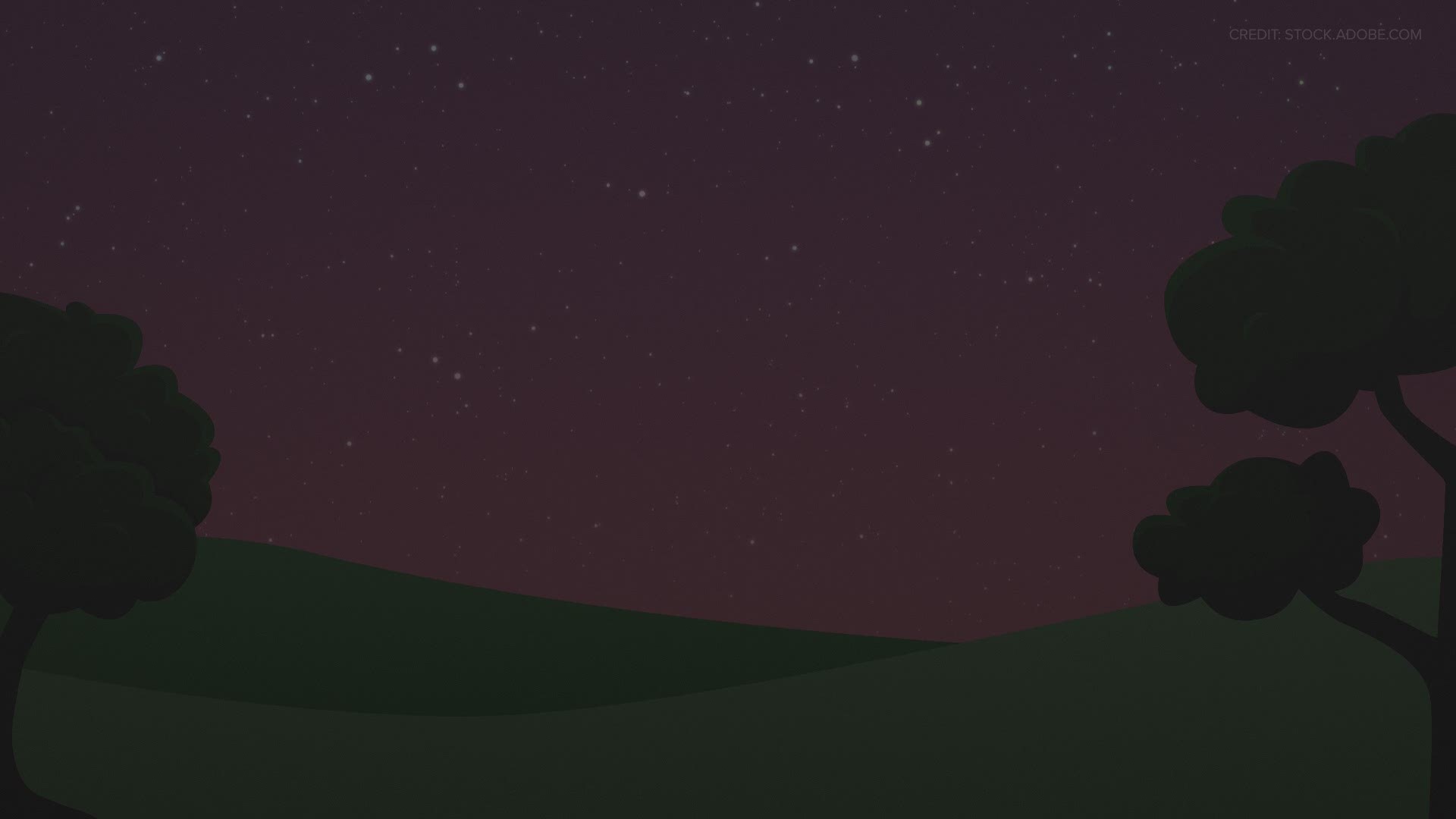BUFFALO, N.Y. — The Winter Solstice may mark the darkest day of the year, but oddly enough, in 2020 of all years, the universe is going to provide one very rare bright spot in the night sky.
You may have heard something going around on the internet lately about a “Christmas Star” visible on December 21.
There will be a special celestial event on the solstice, but stars won’t have anything to do with it. It will actually be two planets working together in a way we haven’t observed in almost 800 years.
If you want to watch the event live online, our sister station WCNC in Charlotte is hosting a live stream starting at 6 p.m.
Jupiter and Saturn will reach similar points in their orbits around the sun over the next couple of weeks, making them appear really close together from our vantage point on Earth. This is called conjunction.
Of course, these two gas giants will actually still be over 400 million miles apart. But to us, the planets will appear so close, about one-fifth of a full moon apart, that they will actually look like one giant planet. This will create a noticeably bright point low in the southwestern sky.


Jupiter and Saturn reach conjunction about once every 20 years, but what makes this year so spectacular is how close the two planets will appear this time around. The specific distance varies from cycle to cycle because all planets in our solar system orbit the sun in elliptical patterns rather than perfectly circular paths. A conjunction this close hasn’t occurred between Jupiter and Saturn since 1623!
While the two planets will appear closest on the evening of December 21, you can watch Saturn and Jupiter, which appear as two of the brightest points in the sky this time of year, gradually move closer together starting now.
For the best viewing opportunity at the peak of the event, look low in the southwestern sky right after sunset on December 21. Jupiter and Saturn will be most visible between dusk and about 20 minutes after dark, or approximately 4:45 and 5:45 p.m. local time.
The good news is you won’t need a telescope or any other special equipment, but you will want to make sure you’re away from tall buildings and other areas of bright light. Head outside 10 to 15 minutes before you hope to catch a glimpse in order to let your eyes adjust to the darkness.
Of course, this is all weather-permitting. Right now it looks like there will be patchy clouds around Monday night but you can check for any changes in the seven-day forecast at Storm Team 2’s section of our website.
Set you reminders now so you don’t miss this rare sight. The next conjunction of this magnitude between Jupiter and Saturn won’t happen again until March of 2080!


